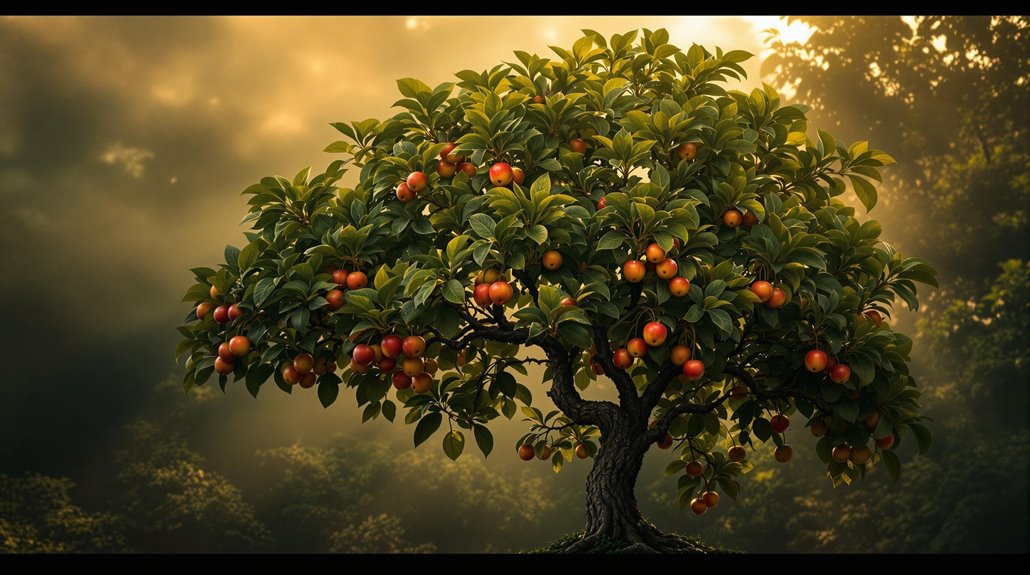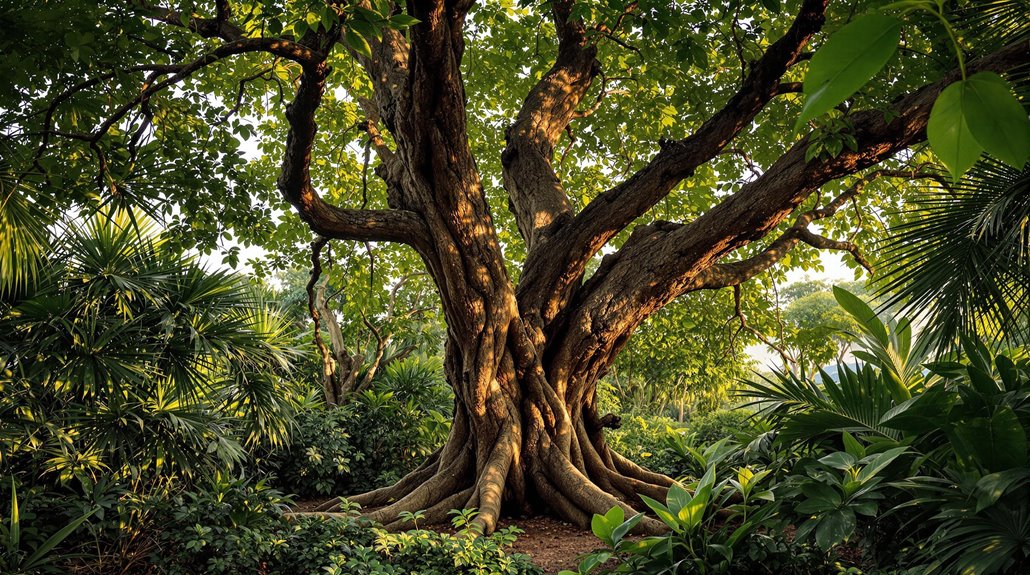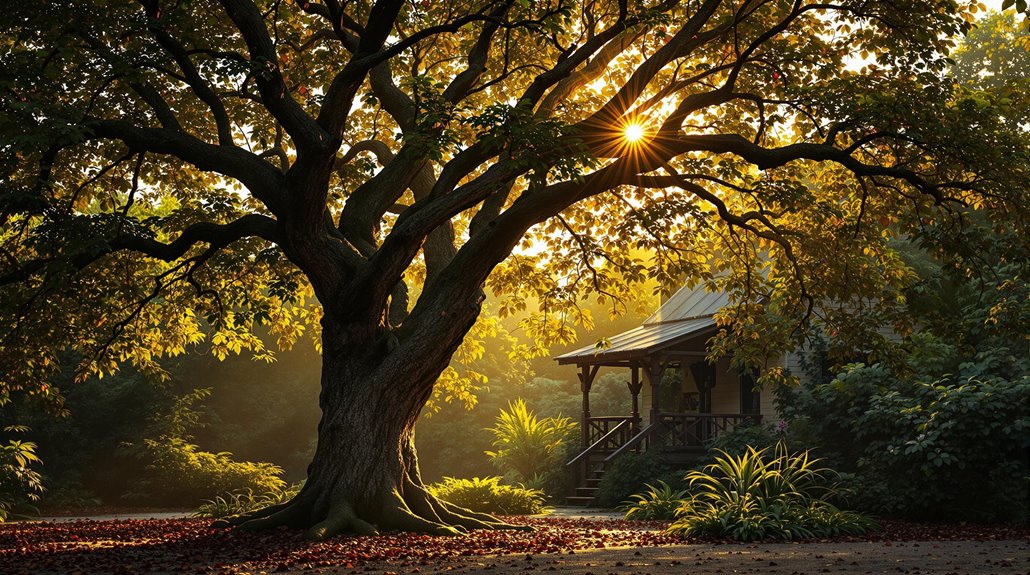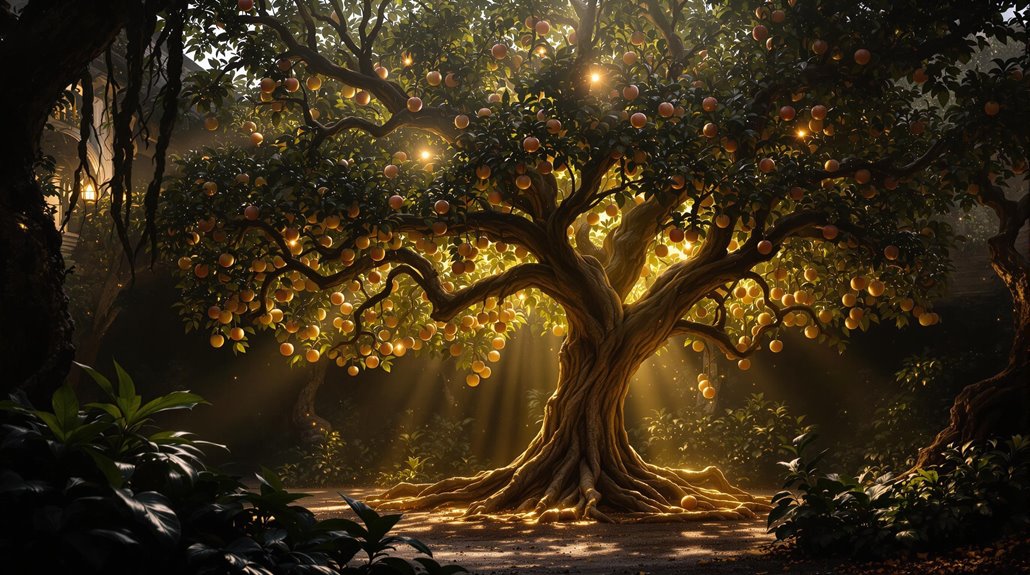Touch at Your Own Risk: The World’s Most Poisonous Tree
Picture yourself strolling along a pristine Caribbean beach, where a seemingly innocent tree offers shade from the tropical sun. You won't find warning signs on every Manchineel tree, but this deceptive beauty is widely known as the world's deadliest tree. Its milky sap can burn through your skin, its fruit can kill you, and even standing beneath it during rainfall could send you to the hospital. Yet there's more to this toxic giant than just its lethal reputation.
The Caribbean's Silent Killer: Nature's Deadly Marvel

Standing silently along Caribbean coastlines, the manchineel tree presents one of nature's deadliest paradoxes – a seemingly innocent plant that packs enough poison to kill an unsuspecting victim.
This toxic legacy stretches back centuries, when Christopher Columbus's crew learned of its dangers firsthand, and indigenous Caribs harnessed its lethal properties for warfare. To warn visitors of its presence, the tree is often marked with red stripes in locations like Martinique.
Rising up to 15 meters with reddish-gray bark and small apple-like fruits, the manchineel's deadly beauty masks its true nature. The tree's scientific name Hippomane comes from ancient Greek, meaning horse madness plant.
You'll find this dangerous species throughout Florida, Central America, and northern South America, where it's earned the ominous Spanish nickname "manzanilla de la muerte" – the little apple of death.
Even the legendary explorer Juan Ponce de León may have met his fate from a manchineel-poisoned arrow, cementing this tree's reputation as nature's most formidable botanical weapon.
From Bark to Fruit: A Complete Arsenal of Toxins
While many plants contain isolated toxic components, the manchineel tree stands out as nature's complete chemical warfare package, with every part harboring deadly compounds.
From its toxic sap to its deceptively innocent-looking fruits, you'll find a lethal arsenal that can cause blistering burns through multiple exposure routes.
Here's what makes this tree a full-spectrum threat:
- The milky white sap contains phorbol and other potent irritants that can severely burn your skin and cause permanent damage if it reaches your eyes.
- The bark, leaves, and apple-like fruits are packed with dangerous compounds like hippomanins and mancinellin.
- Even standing under the tree during rain is hazardous, as water droplets from leaves can transfer toxins and cause painful blisters on your skin.
Growing up to 15 meters tall, these toxic giants cast an imposing shadow over their surroundings.
The tree primarily grows in brackish coastal environments where its toxic nature helps it thrive without being consumed by local wildlife.
Ancient Warriors and Modern Warnings: Historical Impact
The manchineel tree's deadly arsenal has played a significant role in human warfare throughout history. In the Caribbean, the Kalinago warriors mastered the art of creating lethal weapons by coating their arrows with the tree's toxic sap, joining the ranks of ancient warfare practitioners worldwide who utilized natural poisons in combat. The tree's sap causes blindness upon contact with eyes, making it an especially dangerous weapon.
Like the enslaved peoples' plant knowledge, these toxic traditions weren't limited to the manchineel – from Alexander the Great's encounters with venom-tipped arrows in India to the Kingdom of Kush's poisoned projectiles against Romans, the practice was widespread.
Today, the manchineel's legacy lives on through warning signs posted near these deadly trees. If you're visiting Caribbean beaches, you'll need to heed these warnings – even standing under the tree during rainfall can cause severe skin blistering, and burning its wood releases dangerous fumes.
Beach Guardian: The Ecological Importance
Despite its lethal reputation, the manchineel tree serves as an important guardian of coastal ecosystems throughout the Caribbean.
Similar to American beachgrass populations, these trees form natural defenses along shorelines. The trees work alongside microbial communities that naturally filter groundwater before it reaches the ocean. You'll find this dangerous plant playing a key role in coastal protection, preventing beach erosion and creating natural barriers against powerful storms and rising sea levels.
While you might want to keep your distance, the manchineel's extensive root system and dense canopy provide essential benefits for marine biodiversity:
- Traps sediments and improves water quality, creating clearer coastal waters
- Offers safe nursery grounds for countless fish species and marine life
- Captures and stores significant amounts of carbon, helping fight climate change
You're witnessing a perfect example of nature's complexity – even the most toxic species can be fundamental to maintaining healthy coastal ecosystems and supporting local marine communities.
Beyond the Poison: Scientific Discoveries and Future Potential

Beneath its deadly exterior, the manchineel tree holds promising secrets for medical science. The tree's complex array of toxic compounds, including phorbol, hippomanins, and mancinellin, has caught researchers' attention for potential medicinal breakthroughs.
You'll find these substances distributed throughout the tree, from its leaves containing phloracetophenone-2,4-dimethylether to its fruits harboring physostigmine. The history of toxic substances shows that 20% of murders in Europe during the late 18th and early 19th centuries were committed using poisons. Contact with the tree's milky white sap can result in severe blistering and second-degree burns on the skin.
While scientists are still exploring the manchineel's full potential, there's precedent for toxic plants yielding valuable medicines. Just as the yew tree gave us the cancer-fighting paclitaxel and foxglove provided digoxin for heart conditions, the manchineel's chemicals might offer new therapeutic possibilities.
Though research challenges include safely handling these potent compounds and developing effective synthesis methods, the tree's toxic arsenal could someday contribute to tomorrow's medical treatments.










